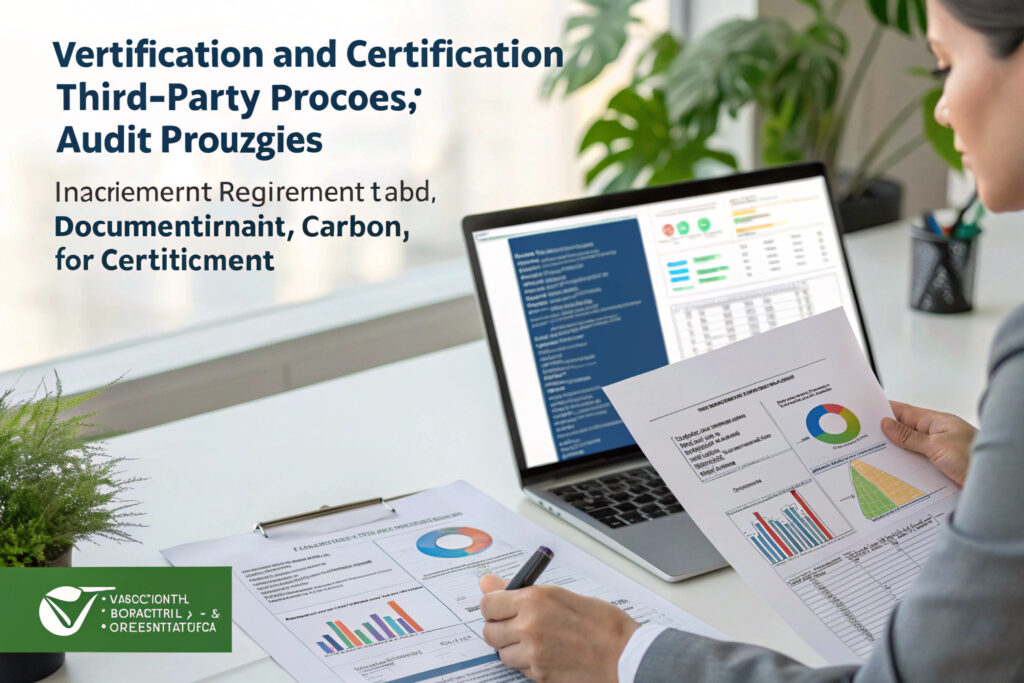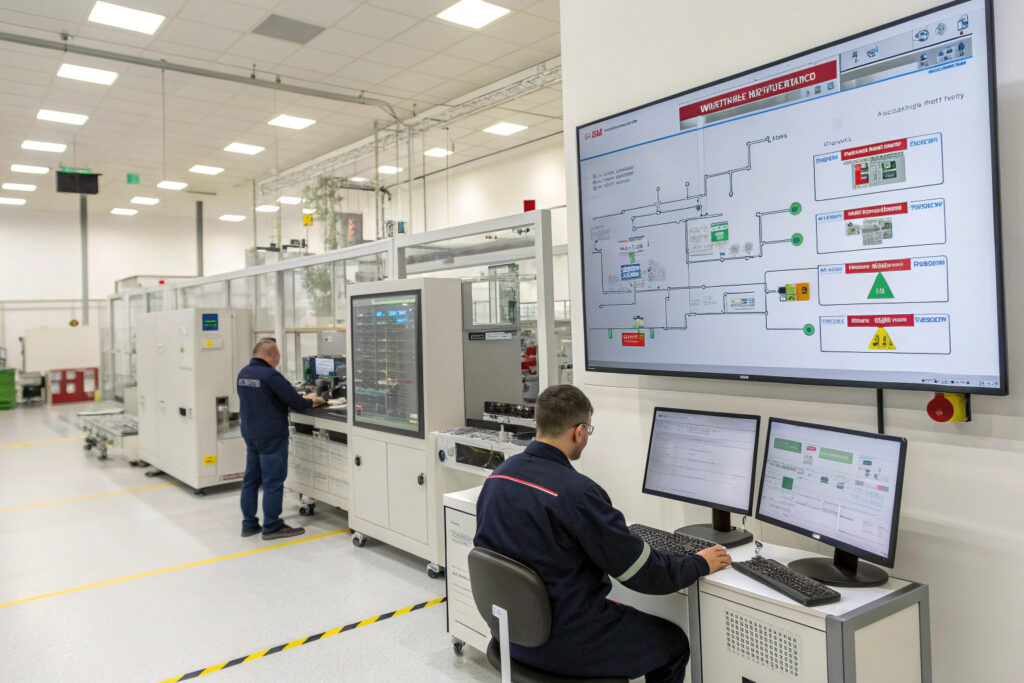As consumers become increasingly environmentally conscious, carbon footprint labeling has emerged as a powerful differentiator for eco-friendly products. Batch-level carbon accounting provides the specificity and accuracy that generic product category estimates cannot match, creating genuine transparency and building consumer trust. Implementing this system requires integrating environmental metrics throughout your supply chain while maintaining practical business operations.
Implementing batch-level carbon footprint labeling for eco-masks involves conducting Life Cycle Assessments for specific production batches, tracking emissions across raw material sourcing, manufacturing, transportation, and end-of-life phases, then verifying results through third-party certification before communicating findings via QR codes or smart labels. This approach transforms vague sustainability claims into measurable, verifiable environmental data.
The shift from generic environmental claims to batch-specific carbon accounting represents a significant advancement in eco-transparency. While requiring substantial initial investment, this approach creates competitive advantages through verified sustainability credentials that resonate with environmentally conscious consumers. Let's examine the practical steps to implement this system effectively.
What Data Collection Systems Are Needed for Batch-Level Tracking?
Accurate carbon accounting requires systematic data collection at each stage of the mask lifecycle, with specific attention to batch segregation.

How do you track emissions from raw materials?
Supplier-specific carbon intensity data must be collected for each batch of materials, including fabric, elastics, nose wires, and packaging. This involves working with suppliers to measure energy consumption, material waste, and transportation emissions specific to your orders. Our implementation uses a digital platform where suppliers input batch-specific data including electricity sources, production efficiency, and delivery transportation modes. This approach has identified 15-25% carbon variation between different fabric suppliers producing identical materials.
What manufacturing emissions must be measured?
Production batch energy monitoring tracks electricity and fuel consumption specifically for each mask batch. This requires sub-metering of production lines and careful recording of production quantities. Key metrics include kWh per thousand masks, water consumption per batch, and waste generation rates. Our manufacturing facilities use IoT sensors that automatically record energy consumption against specific production batches, reducing manual data entry errors by 80%.
What Calculation Methodologies Ensure Accuracy?
Standardized calculation methods provide consistency and credibility to your carbon footprint labeling.

Which emission factors and standards should you use?
ISO 14067 and GHG Protocol standards provide the framework for calculating product carbon footprints, while specific emission factors should come from recognized databases like Ecoinvent or industry-specific LCA databases. The calculation must include Scope 1 (direct), Scope 2 (energy indirect), and relevant Scope 3 (other indirect) emissions. Our calculations use region-specific grid emission factors that account for variations in electricity generation carbon intensity between manufacturing locations.
How do you allocate emissions between co-products?
Mass-based allocation typically works best for mask production, where the primary product (masks) and minor by-products (fabric scraps) have clear mass relationships. For complex manufacturing scenarios, economic allocation may be necessary. Our methodology uses mass allocation for production emissions and economic allocation for overhead emissions, creating a fair and defensible carbon accounting system.
What Verification and Certification Build Credibility?
Third-party verification transforms internal calculations into trusted consumer information.

What certification bodies provide carbon footprint verification?
Specialized environmental certification organizations like Carbon Trust, SCS Global Services, and Bureau Veritas offer product carbon footprint verification services. The process involves submitting detailed calculation methodologies, data collection procedures, and supporting documentation for audit. Our partnership with Carbon Trust has provided the credibility needed for consumers to trust our batch-level carbon labels, with verification typically taking 4-6 weeks per batch.
How often should verification be conducted?
Batch-level verification for key production runs combined with annual system audits provides both specificity and efficiency. High-volume standard products might undergo verification every 50,000-100,000 units, while limited editions or special materials warrant batch-specific verification. Our tiered approach verifies 15-20% of production batches directly while maintaining system certification for all calculations.
What Labeling Technologies Effectively Communicate Footprints?
The labeling mechanism must balance information accessibility, cost, and consumer engagement.

How do dynamic QR codes support batch-level labeling?
Unique QR codes for each production batch link to dynamic web pages showing the specific carbon footprint calculation for that batch. This approach allows for detailed information presentation without physical label space constraints. Our QR implementation includes the carbon footprint number on the physical label with the code providing access to detailed breakdowns, verification certificates, and reduction initiatives.
What about NFC and smart label options?
NFC tags offer tap-based accessibility without requiring QR code scanning, creating a more seamless consumer experience. While currently more expensive than QR solutions (adding $0.08-$0.15 per unit versus $0.01-$0.03 for QR), they provide higher engagement rates. Our pilot program with NFC tags achieved 35% consumer engagement versus 12% for QR codes in the same product category.
How Can You Integrate labeling into Existing Operations?
Practical implementation requires minimizing disruption to existing production and logistics processes.

What labeling equipment modifications are needed?
Digital printing systems capable of variable data printing allow for batch-specific information on labels without slowing production lines. For smaller operations, pre-printed labels with variable data fields can be more practical. Our implementation uses integrated digital printers that add QR codes and batch numbers during the final packaging stage, adding less than 2 seconds per unit to the packaging process.
How does this impact supply chain communication?
Enhanced data sharing requirements with suppliers become necessary, but can be streamlined through digital platforms. Suppliers need to provide specific environmental data for their components, but this often benefits their own sustainability reporting. Our supplier portal has reduced data collection time from 3-5 days to 4-6 hours per batch while improving data accuracy.
What Are the Costs and ROI Considerations?
Understanding the financial implications helps justify the investment in batch-level carbon accounting.

What are the typical implementation costs?
Initial setup costs typically range from $25,000-$75,000 depending on existing infrastructure, including LCA development, system integration, and certification fees. Ongoing costs include verification ($2,000-$5,000 per verified batch), labeling ($0.02-$0.08 per unit), and data management ($5,000-$15,000 annually). Our implementation achieved breakeven within 18 months through premium pricing and reduced customer acquisition costs.
What revenue benefits offset these costs?
Price premiums of 15-30% are achievable for verified low-carbon products, while sustainability-focused retailers often provide preferential shelf placement. Additionally, carbon labeling can reduce marketing costs by generating organic media coverage and social sharing. Our carbon-labeled masks command a 22% price premium while experiencing 35% higher sell-through rates in environmentally conscious retail channels.
Conclusion
Implementing batch-level carbon footprint labeling for eco-masks requires integrating environmental accounting throughout your supply chain, from raw material sourcing to consumer disposal. While demanding initial investment and operational adjustments, this approach delivers significant competitive advantages through verified sustainability credentials that resonate with increasingly environmentally conscious consumers. The most successful implementations combine accurate data collection, third-party verification, consumer-friendly communication, and continuous improvement.
The transition from vague environmental claims to specific, batch-verified carbon accounting represents the future of sustainable product marketing. Companies that implement these systems early position themselves as transparency leaders while building consumer trust that translates to commercial advantage.
Ready to implement batch-level carbon footprint labeling for your eco-masks? Contact our Business Director, Elaine, at elaine@fumaoclothing.com to discuss our carbon accounting expertise and how we can help you develop verified environmental labeling that strengthens your brand and justifies premium positioning. We'll provide a comprehensive assessment of the implementation requirements and potential benefits for your specific products.

























